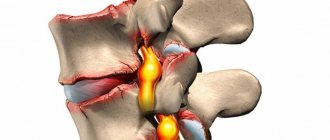Back to list Previous article Next article
18.06.2012
Tags:
Klebsiella, microflora
( 9 ratings, average: 5.00 out of 5)
In the summer, diseases caused by infectious agents become relevant.
Microorganisms of the enterobacteria family are especially active - gram-negative, rod-shaped, with flagella for movement and attachment, facultative anaerobes: Escherichia coli, salmonella, klebsiella, etc. Thus, Klebsiella - klebsiella , can exist in soil, water, remaining viable for months, persists on food and dust.
Klebsiella can enter the body through the gastrointestinal tract, from poorly washed hands, vegetables and fruits, from water, from soil. However, this microorganism belongs to the group of opportunistic microflora and is detected in absolutely healthy children and adults; it is considered one of the elements of normal intestinal flora .
At the same time, Klebsiella is one of the most common nosocomial infections , because it is resistant to environmental factors and high temperatures. Although, in a few minutes it dies from disinfectants, and at very high temperatures in 1-1.5 hours. If proper hygiene rules and sanitary standards in the premises are not observed, there are cases of infection of newborns with Klebsiella in maternity hospitals. The baby constantly cries and cannot fall asleep, he is bothered by colic and frequent diarrhea. And the reason is Klebsiella - a bacterium resistant to the harmful effects of the external environment, covered with a dense capsule.
Factors in the development of klebsiellosis
Klebsiella belongs to the same family with bacteria of the genus Serratia and Enterobacter. These pathogens, especially Serratia, which is the most drug-resistant, cause outbreaks of infection in hospitals due to the contamination of a number of medications and medicinal solutions used in respiratory therapy. They are difficult, but can be differentiated only with the help of special tests. Klebsiella Enterobacter and Serratia, which cause nosocomial pneumonia, urinary tract infection, and bacteremia, have different susceptibility to antimicrobial drugs.
Positive coloring. K. pneumoniae cell. Uv. x6000
If the human body’s defenses are weakened for some reason: general immunity is reduced, often influenza, ARVI, the use of antibiotics, consumption of contaminated, low-quality products, diabetes mellitus, alcoholism, etc., Klebsiella begins to actively multiply, secrete toxins, causing endotoxemia and inflammatory processes in different organs. Diseases such as pneumonia, inflammatory diseases of the urinary tract, meningitis, conjunctivitis, intestinal infections, sepsis and quite rare diseases - ozena (fetid runny nose), rhinoscleroma develop.
Most often, Klebsiella causes pneumonia and intestinal damage. In adults, pneumonia caused by Friedlander's bacillus is more common. Due to the peculiarity of the immunity of newborns and the insufficiency of their normal microflora on the skin, in the respiratory tract and especially in the intestines - Klebsiella - Klebsiella oxytoca - more often causes damage to the gastrointestinal tract - the large intestine.
Norms
To diagnose Klebsiella infection, any child’s secretions are used: feces, urine, mucus from the nasopharynx, etc. The main method for determining bacteria is a stool culture tank.
If more than 106 microbial representatives are detected in 1 g of feces, klebsiellosis is diagnosed. As a rule, the average value of klebsiella in feces is 10 4 and is normal.
If Klebsiella is detected in the urine and clinical manifestations of the disease are present, then the child has an acute urinary tract infection.
Symptoms of Klebsiella (klebsiellosis) in the gastrointestinal tract in infants
The symptoms of Klebsiella in babies are similar to the symptoms of dysbiosis: bloating, flatulence, colic, regurgitation. But more often they manifest themselves as loose stools with mucus, blood and a pungent odor, fever, abdominal pain and severe dehydration. Depending on the type of immunity the baby has, the course of the disease can be either mild or fraught with severe infectious complications. If Klebsiella multiplies quickly in the body, releases toxins, intoxication and dehydration increase, then the disease can manifest itself within a few hours and will require urgent hospitalization of the child.
Therefore, in case of any stool disorder, it is necessary to consult a doctor, have the child’s stool tested, and undergo an examination to accurately identify which bacteria caused the change in the child’s condition . Breastfeeding plays a major role in restoring immunity and normal microflora in a newborn. If there is a high prevalence of Klebsiella and a severe form of the disease, the child is treated in a hospital, complex therapy with antibiotics is prescribed. If the infant’s disease is mild, then probiotics are prescribed to correct the intestinal microflora. Synbiotics – Normoflorins L and B – have active anti-inflammatory, antiseptic and nutritional effects, which is important for Klebsiella infection. The child may feel normal, but during examination they find an increase in the number of Klebsiella in the tests. Then drugs with lacto- and bifidobacteria are prescribed to displace excessive amounts of Klebsiella, increase immunity, and improve one’s own beneficial microflora.
Doctor Komarovsky's opinion
Under normal conditions, Klebsiella is present in the child’s body, but does not manifest itself in any way. It is absolutely safe and lives in the body of any healthy child and adult.
Once there is a disruption in the immune system, for example after the use of antibacterial drugs, the normal intestinal flora changes.
Bifidobacteria and other beneficial bacteria became suppressed, there was no one to slow down the intensive growth of Klebsiella, and so their intensive growth began. But this is already a threat to the life of a small child. The danger lies in their strong toxic effect on the body of infants.
What can trigger growth and launch development
- Transition from breastfeeding to artificial.
- Violation of sanitary regime and hygiene.
Symptoms of Klebsiella in other organs and systems
If Klebsiella enters the urinary system, they can cause urethritis, pyelonephritis , with a persistent recurrent course that is difficult to treat and often altered sensitivity to antibiotics. In rare cases of klebsiellosis, a complication such as ozena is possible - a fetid runny nose, with damage to the nasal mucosa, the formation of purulent, painful, bleeding crusts.
Symptoms and signs of urinary tract, gallbladder and abdominal infections caused by Klebsiella are no different from those caused by E. coli . They develop more often in patients with diabetes mellitus and in patients receiving antimicrobial drugs to which the causative agent of the disease is resistant. Klebsiella is also an important etiological factor in septic shock.
Klebsiella is known as a factor in the development of pulmonary diseases, however, among the causes of bacterial pneumonia , it occurs in about 1% of all cases. It occurs mainly in men over 40 years of age, with chronic bronchopulmonary diseases, patients with diabetes mellitus and people with alcoholism. In older people, gram-negative bacteria colonize the oropharynx and can spread through the respiratory tract, causing pneumonia or purulent bronchitis.
The clinical symptoms of Klebsiella pneumonia are similar to those of pneumococcal pneumonia, but are often characterized by a more severe course: sudden onset, chills, persistent fever, productive cough, sometimes streaked with blood and a pungent odor, with severe pleural pain, and the appearance of shortness of breath. Patients are often in prostration and delirious due to intoxication. Most often, the focus of inflammation is located in the right upper lobe of the lung, but can quickly progress if treatment is not carried out and spread from one lobe to another. Cyanosis and shortness of breath appear, jaundice, vomiting, and diarrhea may occur. During examination, the formation of pleural effusion, compaction of lung tissue, or necrotizing pneumonia with rapid cavernization is revealed. Against the background of intoxication, a decrease in the number of leukocytes in the peripheral blood is determined, and not an increase, as with inflammation. Abscesses and empyemas of the lungs are much more common. This is explained by the ability of Klebsiella to cause tissue destruction. Characteristic signs are not always revealed during x-ray examination: a decrease in lung volume, its compaction, emphysematous changes. With the slow progression of the infectious inflammatory process, chronic necrotizing pneumonitis resembling tuberculosis may develop, with a productive cough, weakness, and severe anemia.
Where can you get infected with Klebsiella pneumonia and can it be cured?
“Klebsiella pneumoniae is now increasingly the causative agent of infection within hospitals. It is one of the so-called nosocomial infections. The bacterium is now acquiring multiple resistance to most modern antibiotics. But the truth is that most resistance mechanisms are already understood, and new antibacterial drugs are being developed that overcome this resistance. Yes, of course, Klebsiella poses a threat if you do not understand in time that the infection is caused by it. In this case, everything could end badly. But if we know for sure that the cause of the disease is this bacterium, and we know its resistance mechanisms, then doctors have certain opportunities to fight it. “Everything is not entirely so hopeless,” says doctor, clinical pharmacologist, head of the department of general and clinical pharmacology at RUDN University Sergei Zyryanov .
Treatment of klebsiella
Treatment of diseases caused by Klebsiella depends on the location and severity of the pathological process. Antibiotics are prescribed in severe cases due to sensitivity; in mild cases or only an increase in Klebsiella is detected in tests, they are not used. Be sure to use a variety of drugs that restore intestinal microflora.
Klebsiella pneumonia As a rule, antimicrobial therapy is recommended to begin even before culture results and determination of drug sensitivity to antibiotics are obtained. In this case, Normoflorin biocomplexes, containing waste products of living lacto- and bifidobacteria with active antiseptic and anti-inflammatory effects, have a therapeutic effect against klebsiellosis, which has been proven by scientific research and many years of practice, both in newborns, pregnant women, lactating women, and adults and the elderly.
Back to list Previous article Next article
Why is Klebsiella becoming increasingly resistant to antibiotics?
Bacteria are increasingly adapting to antibiotics and passing on the resistance gene to other bacteria, thus creating superbugs. These are pathogens of infectious diseases that are resistant to several antibiotics traditionally used to treat these diseases. The ability of superbugs to resist antibiotics is causing concern in the international community; the problem is even being discussed at the level of the UN General Assembly.
“So, unfortunately, what happens is that all the microbes that live in hospitals become more stable and resistant, since in medical organizations antibiotics are often prescribed for treatment. This makes microbes more resistant to various influences, and doctors have to use more force and more costs associated with treating such an infection,” says Zyryanov.
Unlike other bacteria, Klebsiella has the ability to form a capsule, which makes it stable in the external environment. This capsule protects the pathogen from drying out, so Klebsiella can be stored for a long time at room temperature. Most strains of Klebsiella pneumoniae are immune to penicillins, cephalosporins of III-IV generations, aminoglycosides, and fluoroquinolones.
Article on the topic
What will we replace antibiotics with when they stop working?
As American doctors previously noted, a particular problem is that some strains of Klebsiella have also become more resistant to carbapenem antibiotics. These drugs were previously considered most effective in treating infections caused by Klebsiella pneumoniae, but have begun to lose effectiveness in recent years.
Is it necessary to treat
If the baby feels well, is gaining weight, is developing according to age, does not have any symptoms of disease, but Klebsiella is found in the stool, do not worry and do not consider giving the child medicine. Get tested at another laboratory several times if you are very concerned.
If titers increase, consult a specialist.









